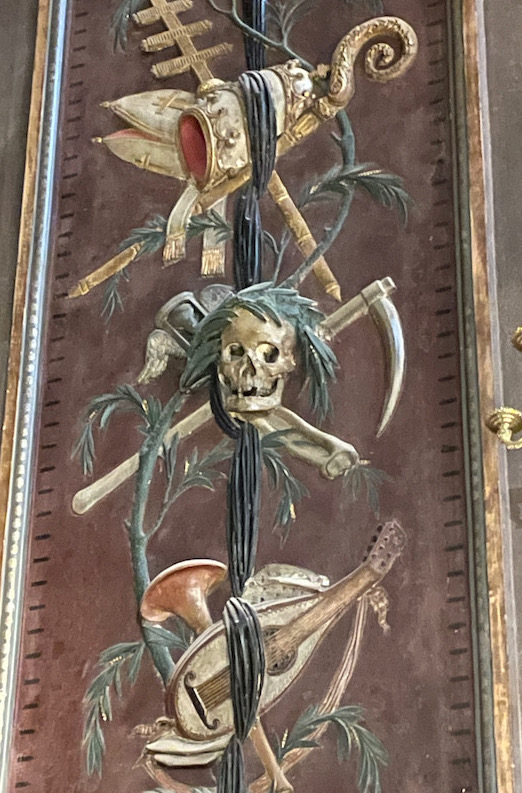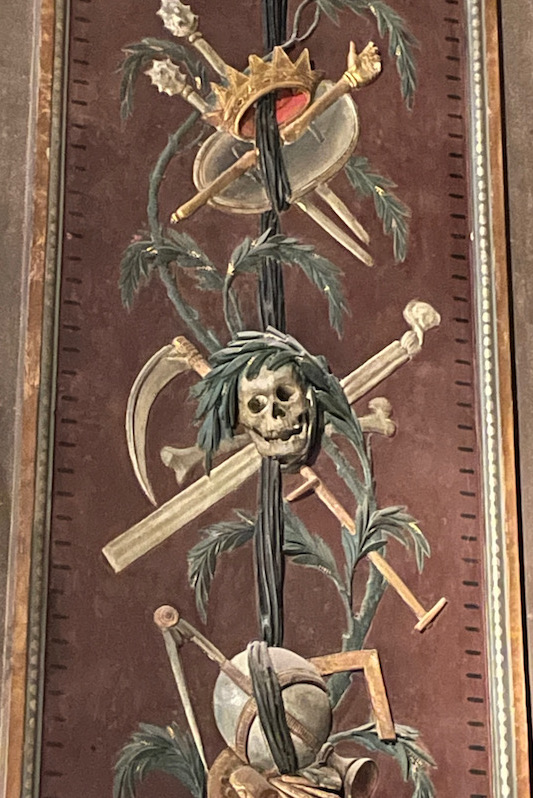Our Blog - Notre-Dame de la Daurade
I had posted this blog in 2019, after the Basilica Notre-Dame de la Daurade was reopened after 2 years of restoration work. We visited again in 2022 during the Heritage Days (called the Journées Européennes du Patrimoine). I decided to not do a separate blog with the 2022 pictures, but instead, combine them into a single blog. In some cases, I get better pictures the 2nd time, or different ones because artwork that had been under restoration is now visible.
We'll start with a little history. Originally, there was a temple dedicated to Apollo here. When Emperor Honorius allowed the conversion of pagan temples to Christianity in 410, the church was established. During the 6th century, a new building was built, decorated with golden mosaics which gives us the name (Daurade comes from the antique name "Deaurata", and comes from the Latin word for gold). It was a Benedictine monastery from the 9th to 15th centuries, when it hit a period of decline. To make way for the construction of Toulouse's riverside quays, everything was destroyed in 1761 and the buildings rebuilt, so the current building dates from the 19th century.
I thought this was quite interesting ... it shows the church (or partial remains) based on the various time periods. The small purple part on the middle-right is where the original temple to Apollo was, followed by the addition of the blueish section, which was the church at around 1100, when it was changed into a Benedictine monastery. Notice how the front of the church is NOT aligned with the river. Then the current church outlined in black, with the round columns in front. You can see how the church orientation has changed, which now matches the bank of the river.
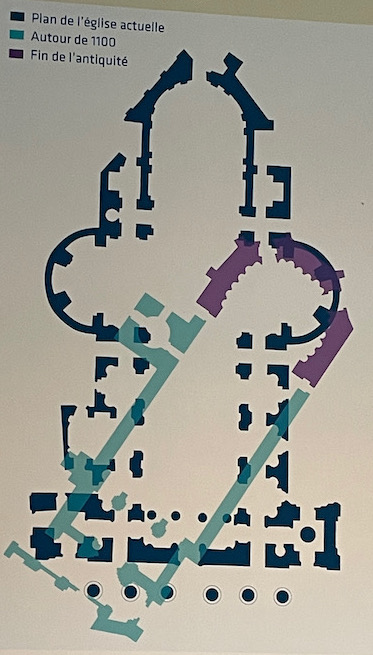
When the Benedictine monastery was here, from 9th to 15th centuries, it was much larger than just the church. There was a cloister, additional buildings, and gardens. Here are a couple pictures of that ... first an engraving and then a drawing from a different angle.

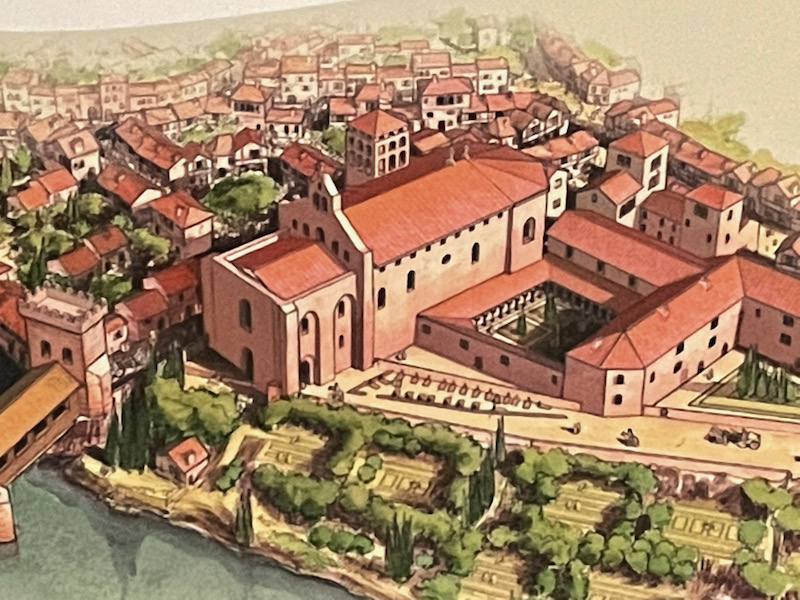
Now the exterior, which is definitely neoclassical style and, from this side, looks like a Roman temple. It is very difficult to get a decent picture of the outside since it is so close to everything else around it.
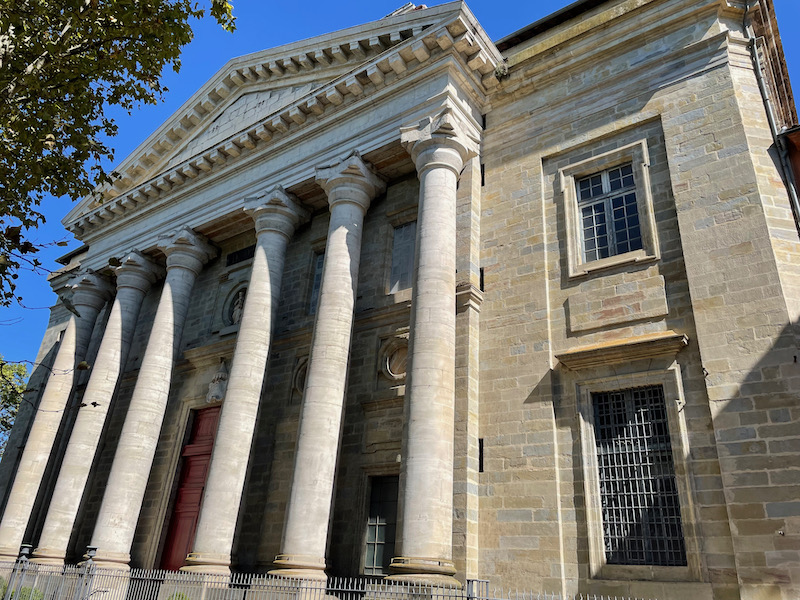
Here we have the main view of the nave, with the Romanesque arches and Corinthian-style column design. The interior design is a combination of real elements (like the Corinthian capitals) and trompe l'oeil (what looks like carved decoration on the square columns). Then a close-up of the ceiling over the nave and transept.



The Chapel of the Immaculate Conception is the work of a Toulouse artist named Bernard Bénézet. It evokes the history of the Brotherhood of the Immaculate Conception locally. Here I show the painting behind the altar, and you can see how lovely the restoration is. The 2nd painting depicts the Bishop of Toulouse officially confirming the Brotherhood of the Immaculate Conception in 1452.
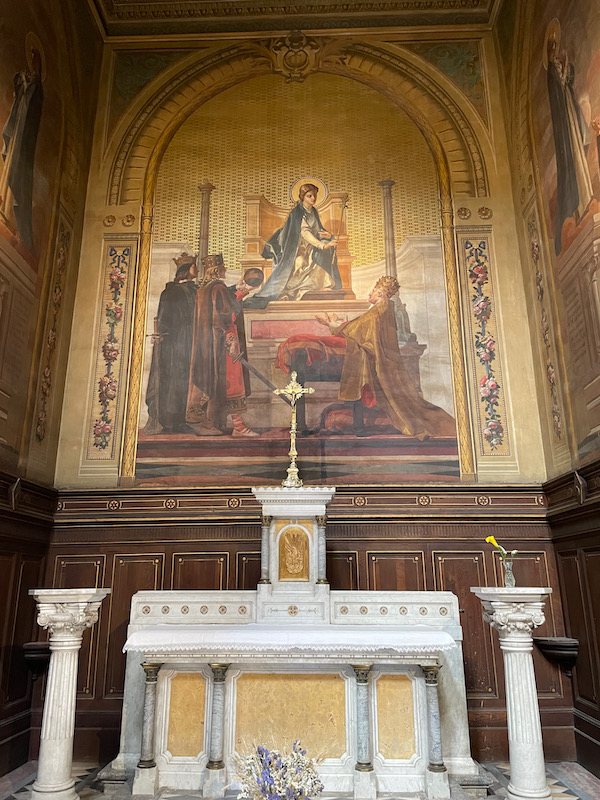

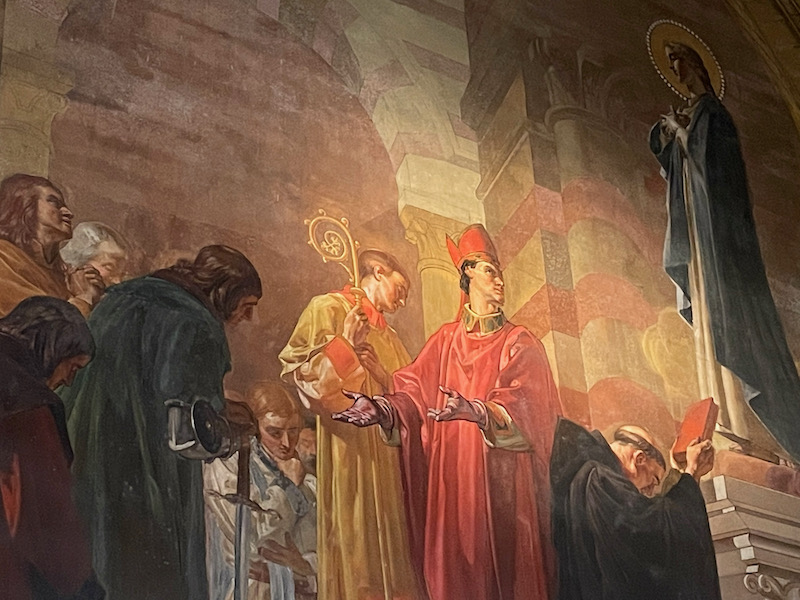
In the baptistery, we have this stained-glass window that represents the crucifixion of Jesus. In this specific case, you see God the Father above, supporting the cross (you can see his hands underneath the cross on each side).

The main altar is dedicated to Mary. The main altar area is the "heart of the church" and dedicating it to Mary indicates that Mary is "in the heart of the church". You have her in the stained-glass window, and a set of monumental paintings behind the altar that go through the life of the Virgin.
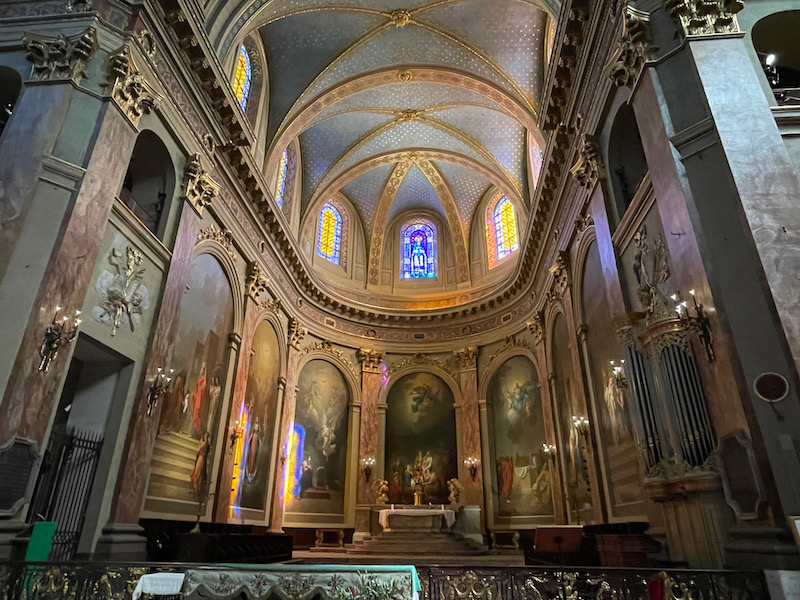
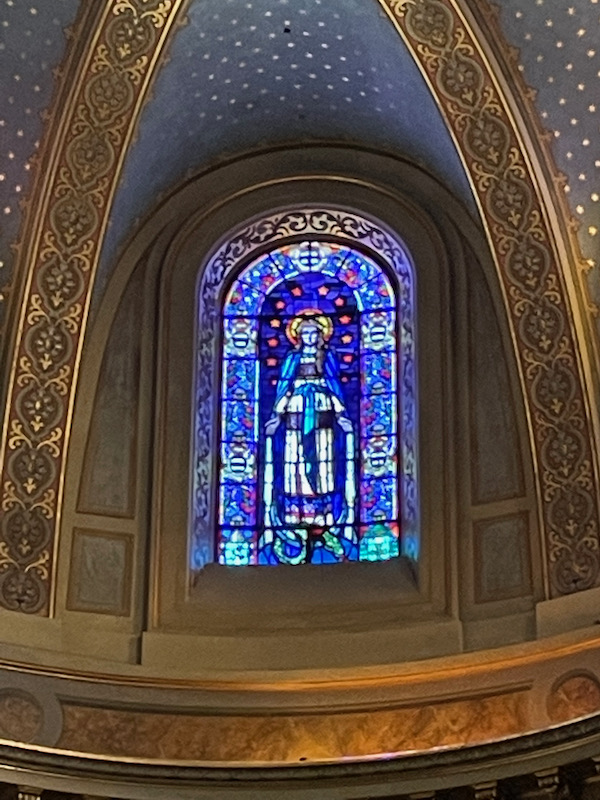
The first of these paintings with the life of the Virgin is the Presentation at the Temple. I wanted to show a few of the pre-and-post restoration pictures. Here I have the Presentation at the Temple before the 2019 restoration and then the same painting in 2019. The restoration work was mostly cleaning to remove a few layers of soot from the candles that had been used during the services. (if you don't see them side-by-side, make your browser a little bit wider).


Continuing with these paintings, we have the Immaculate Conception and Annunciation


The Nativity and the Assumption


The Visitation

And at the end, the Purification, again with the post-restoration and pre-restoration versions.


The church is most famous for the Black Madonna. The original statue was stolen in the 15th century and then its first replacement was burned by Revolutionaries in 1799 on the Place du Capitole. The current statue is an 1807 copy of the original 15th century Madonna. Historically, the blackening of the status was due to the use of candles to light the church. This statue, legend has it, saved the Saint-Michel district from a fire in 1672. The status is about 2 meters tall and has a large wardrobe (32 different outfits), with her dress changing according to the liturgical times. I also have another picture in a different outfit from another visit that I had made.
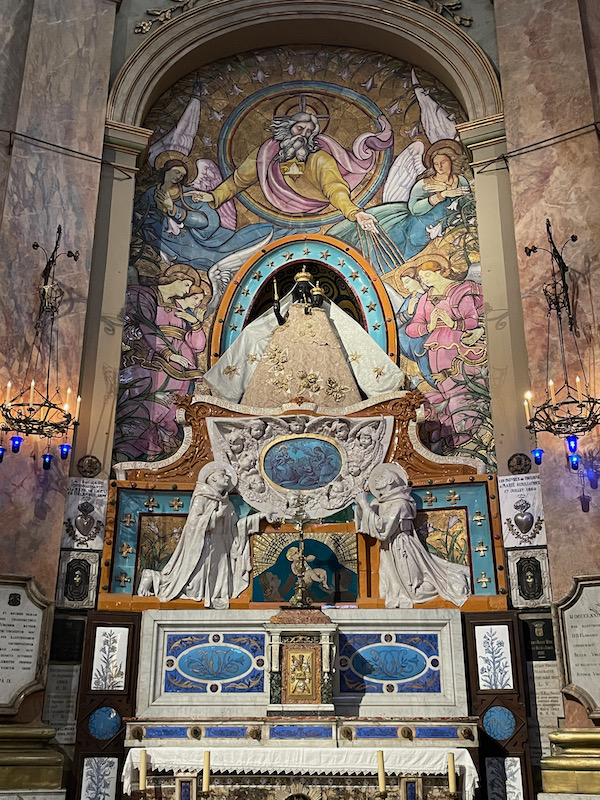
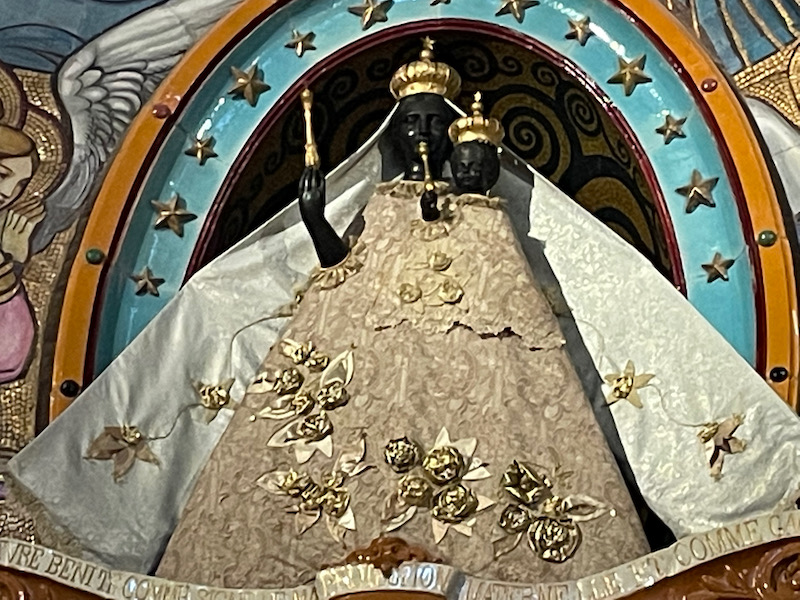

Close-up detail of the top and the enameled base .. the enamelwork was done by a local artist.

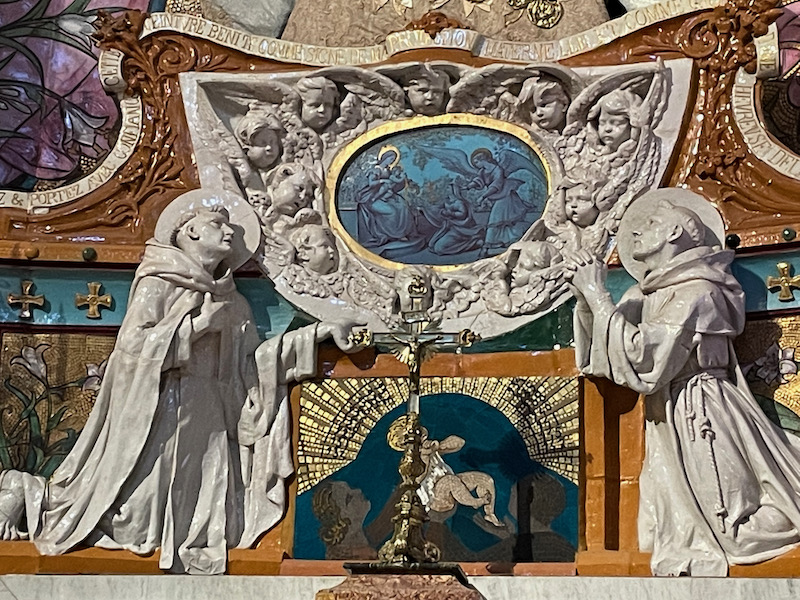
As protecter of the city, the black Madonna would be carried in a procession through the city whenever a disaster hit the city of Toulouse. There are various paintings that show this procession, including this one.
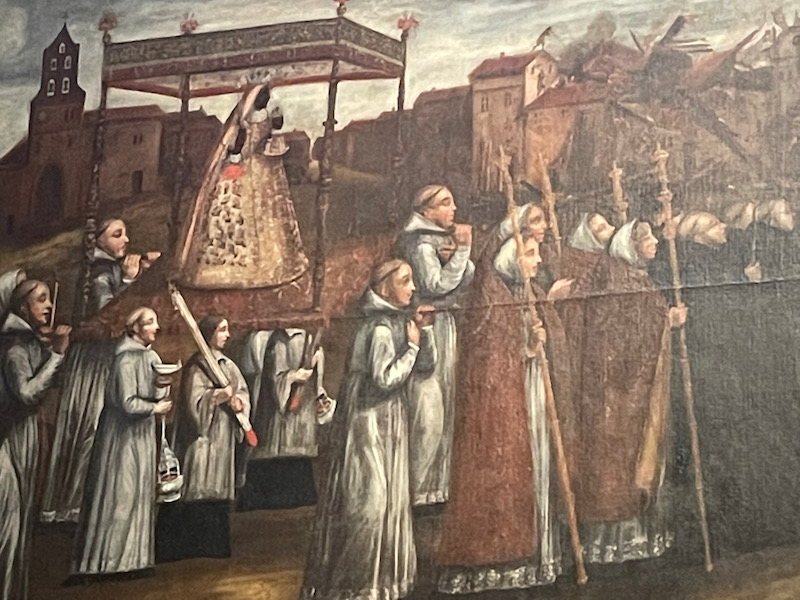
On the other side of the transept is a very similar altar, with another amazing enamelwork. I again tried to give you the after-and-before pictures (I like to put the after ones first, since that is what it looks like today). Again, if they aren't next to each other, you can try making your browser wider). They aren't the exact same angle/picture but you can get a really good idea of the restoration work. On either side of the altar are statues of Joan of Arc and Sainte Germaine.
 >
> 
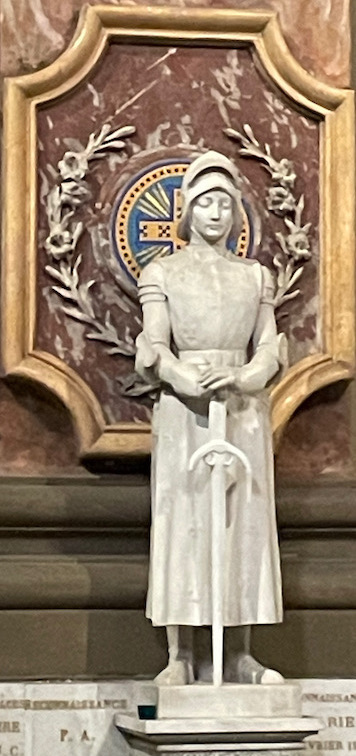
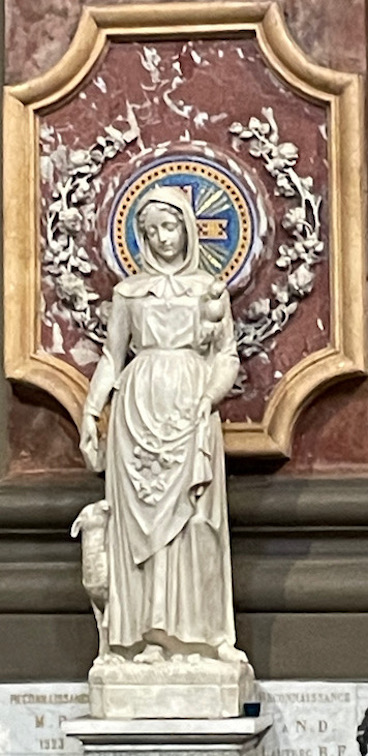
In the 4 angles of the transept are large paintings of the 4 evangelists with their typical symbol, each looking down on ancient cities. Here I have Luke and the bull (hard to see the bull, but it is on his right side), looking down on Rome, and then Mark and the lion, looking down on Cairo.
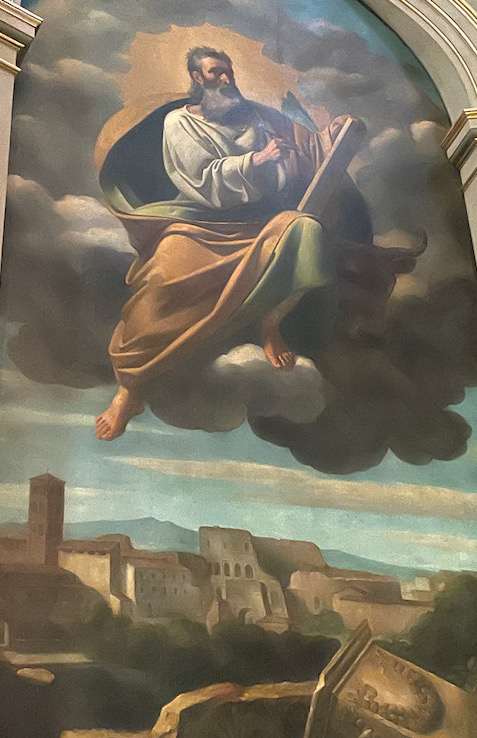
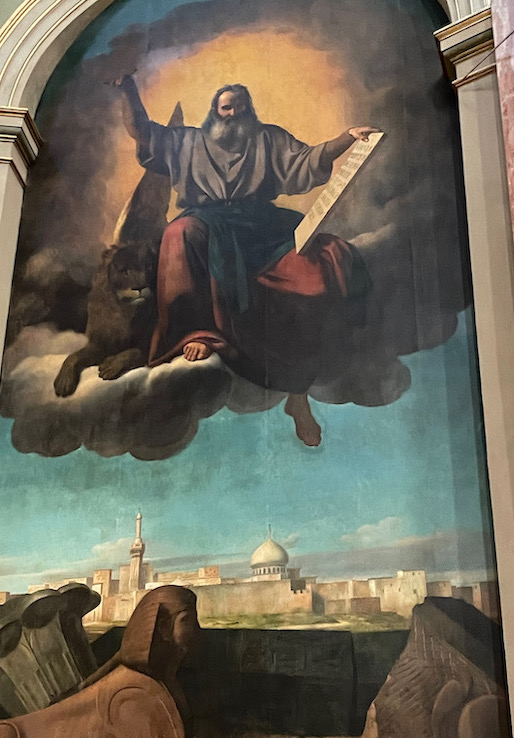
Then John with the eagle and Matthew with an angel

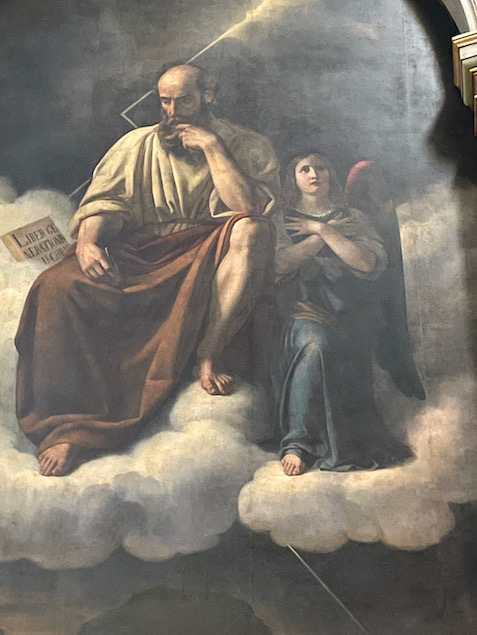
This last chapel was quite interesting, the Chapel of the Confrérie des Âmes du Purgatoire, or the Brotherhood of the Souls of Purgatory. Purgatory is the place of purification of the soul before the Last Judgement, and the chapel was funded by a group dedicated to prayer in support of souls undergoing this trial. The painting over the altar is from the 19th century and shows the souls in purgatory. The crying angels on the side seem to be pulling the black curtains shut.
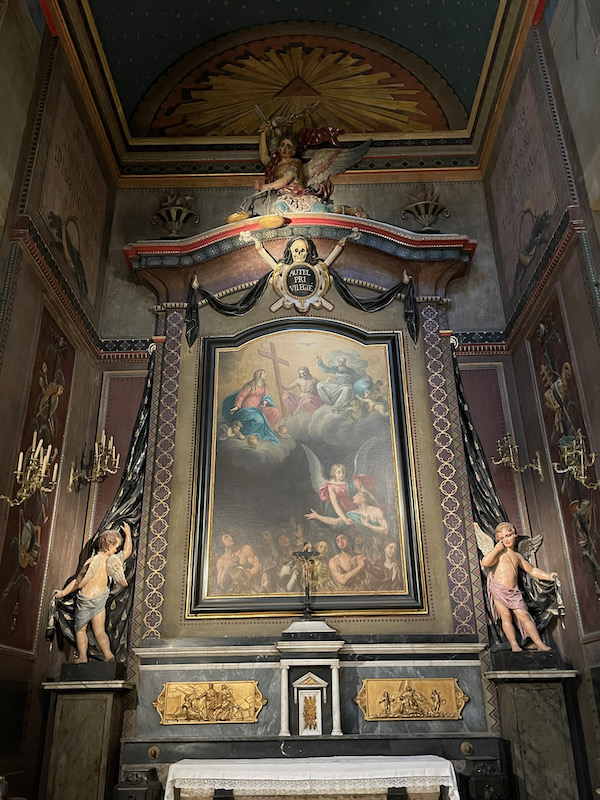
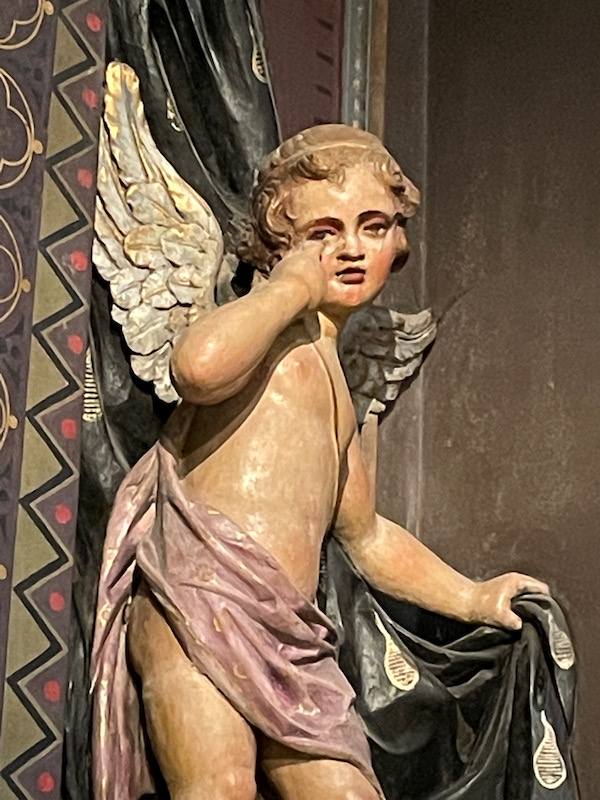
At the top, Michael the archangel has a set of scales, weighing the the deeds of the dead.
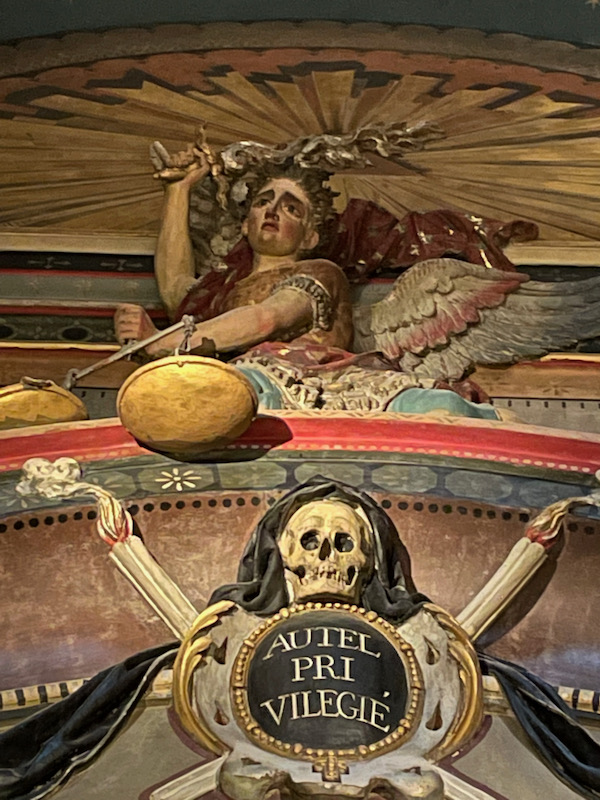

The side walls are decorated with vanities that evoke the fragility of life and passing time.
